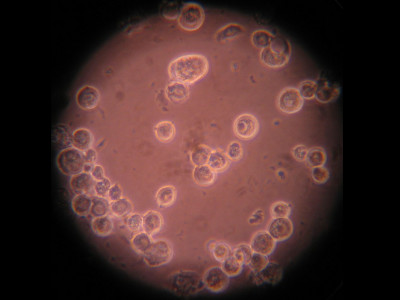Advance to research to repair causative genes of muscular dystrophy in gene editing technology 'CRISPR', succeeded in treating a living dog

by Jametlene Reskp
Genetic editing technology "CRISPR" has great influence in various fields from cancer treatment to low fat bacon creation . Attempts to repair the causative gene of " Duchenne muscular dystrophy (DMD)" using CRISPR have also been conducted for some time, but it is said that there was further progress and succeeded in repairing the gene of a living dog .
Gene editing restores dystrophin expression in a canine model of Duchenne muscular dystrophy | Science
http://science.sciencemag.org/content/early/2018/08/29/science.aau1549
Gene editing of dogs offers hope for treating human muscular dystrophy | Science | AAAS
http://www.sciencemag.org/news/2018/08/gene-editing-dogs-offers-hope-treating-human-muscular-dystrophy

CRISPR Halts Fatal Genetic Disease in Dogs. Could it Help Humans Next? | Digital Trends
https://www.digitaltrends.com/cool-tech/crispr-gene-editing-dmd/

DMD is a genetic disorder that develops in early childhood and is thought to be caused by a mutation in a gene related to the production of a protein called dystrophin . When muscular weakness occurs in DMD, many hearts die before the age of twenty, as the heart can not be moved properly, or the diaphragm can not be breathed by moving the diaphragm. It is said that one in 3,500 people around the world is DMD, and there is no effective treatment in 2018.
Scientists at the University of Texas Southwestern Medical Center succeeded in repairing 92% of the dystrophin contained in the dog's muscle and heart tissue by genetic editing. Experts say that 15% of restorations can help patients well enough, and the number "92%" is a remarkable achievement.
Previous studies have shown that DMD gene mutations can be corrected in human cells and mice. The four dogs that were the subject of this experiment have the same genetic mutation found in human DMD patients, and this study, which is directed to larger animals than the experiments conducted in the past, It suggests the possibility that technology can be applied to humans as well. To correct the genes of living animals, the research team seems to have carried a molecule that carries out genetic editing of CRISPR to a harmless virus preferentially infecting skeletal muscle and myocardium.

by ivanovgood
Of course, further studies are needed to apply technology to human beings and to conduct clinical trials, and it is also necessary to confirm whether long-term observation does not cause cancer by treatment with CRISPR. Eric Olson, a prominent molecular biologist, is involved in this research, Mr. Olson said, "DMD and CRISPR treatment is also a huge field, so we have to check carefully."
Related Posts:
in Science, Posted by darkhorse_log







